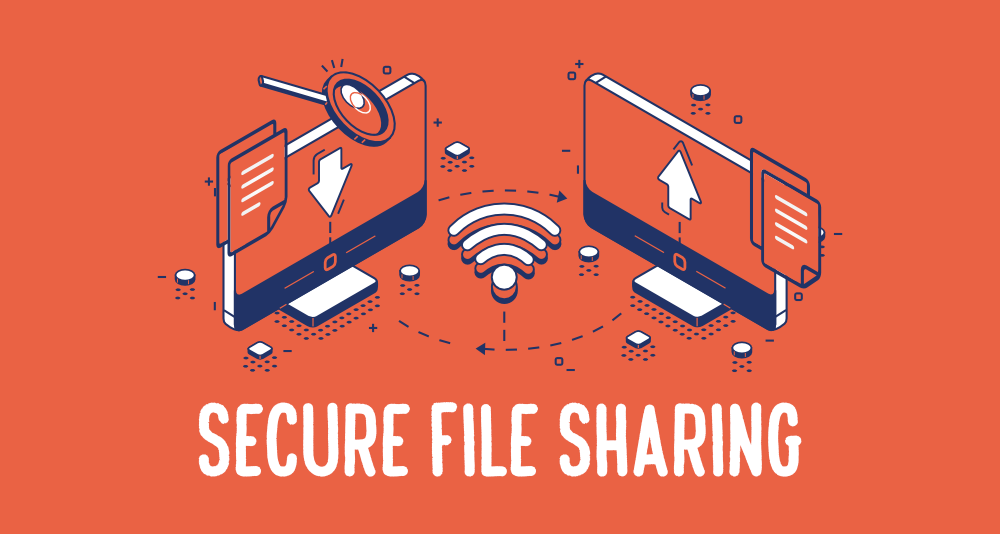Businesses tend to thrive with the timely sharing of information or data. It is important for the organization to have access to the information that they need to accomplish their tasks, efficiently and conveniently. And that’s why file-sharing is quite important to any business.

Fortunately, technological advancement has made file sharing easy. However, as technology advances, so do malicious people are on the rise to take advantage of systems vulnerabilities. A lack of secure file-sharing practices can easily lead to the leakage or theft of sensitive data that can cause a lot of damage to an organization. In addition, forgoing security practices in file-sharing makes the system vulnerable to attacks such as man-in-the-middle attacks or the installation of malicious software.
Here are 5 Best Practices for Sharing Files securely that you can adopt for your organization:
1. Make Use of VPNs
With the heightened trend of flexible working, employees are no longer limited to working in the office. However, this comes with the increased use of insecure public networks when employees decide to work from public places. While you can’t control where your remote workers decide to work, you can sensitize the need to connect to such networks through a VPN. A VPN creates a safe tunnel for data to pass through when being transferred on the internet. It makes it difficult for hackers to access what is being transferred. In addition, a VPN comes in handy when there is a need to send large videos or any other large file. A VPN, such as NordVPN, etc. can hide the file size from your internet service provider, making it possible to send them securely.
2. Invest In a File-Sharing Solution
A file-sharing solution allows a secure platform to store files securely and makes it possible to access these files from anywhere. Of course, this eliminates the need to share files back and forth. You can set permissions for people who are allowed to access these files. The best part is that you have control over these permissions, and you’ll be notified of any user activity. This makes it easy to control the number of people who can access and make changes to the files. In addition, the information stays encrypted, adding a layer of security to it.
3. Limit the Use of USBs
USBs are very popular when it comes to sending large files from one location to another. However, USBs are only secure if you don’t lose them. Think about it, how many USBs have you come across lying around in your neighborhood? That’s how easy it is to lose one. The unfortunate thing is that you have no idea where the USB will land if it happens to get lost. And if a malicious person gets it, they can get access to all the information or data.
4. Create Strong Passwords
We have talked about using a file-sharing solution that allows you to use password protection. The truth is that you can’t count your data secure if you are using simple passwords that are easy to guess. You need to make it difficult for unauthorized people to access your files by using strong passwords. You can use a combination of numbers, symbols, and upper and lower cases – make it long enough for extra security. In addition, use multi-factor authentication to make sure only the right people access the files. Also, use something that is only possessed by the user such as a text to their mobile phone, etc.
5. Train Your Team on Secure File sharing
With busy schedules and the overwhelming pressure to deliver, it can be easy to overlook practices for secure file sharing. However, such mistakes can be costly. To make sure that such events never happen, you need to educate your team on secure file sharing. Let them have a clear understanding of the risks involved if the information is mishandled. You can classify the data handled in your organization and explain the levels of security each class needs.
In addition, you need to make sure that the whole team is well-trained in using the adopted file-sharing solution. Failure to do this, your employees will fall back on relying on their own knowledge, which sometimes may not align with the organization’s secure file-sharing policy.
Conclusion
It’s amazing to analyze – how much data an organization passes across teams, clients, suppliers, and other stakeholders in a single day. If you think about it, the damage that can sprout from mishandling such amounts of data is hard to fathom. Hence, secure file sharing is an aspect of the business that must be handled with the responsibility it deserves!!




